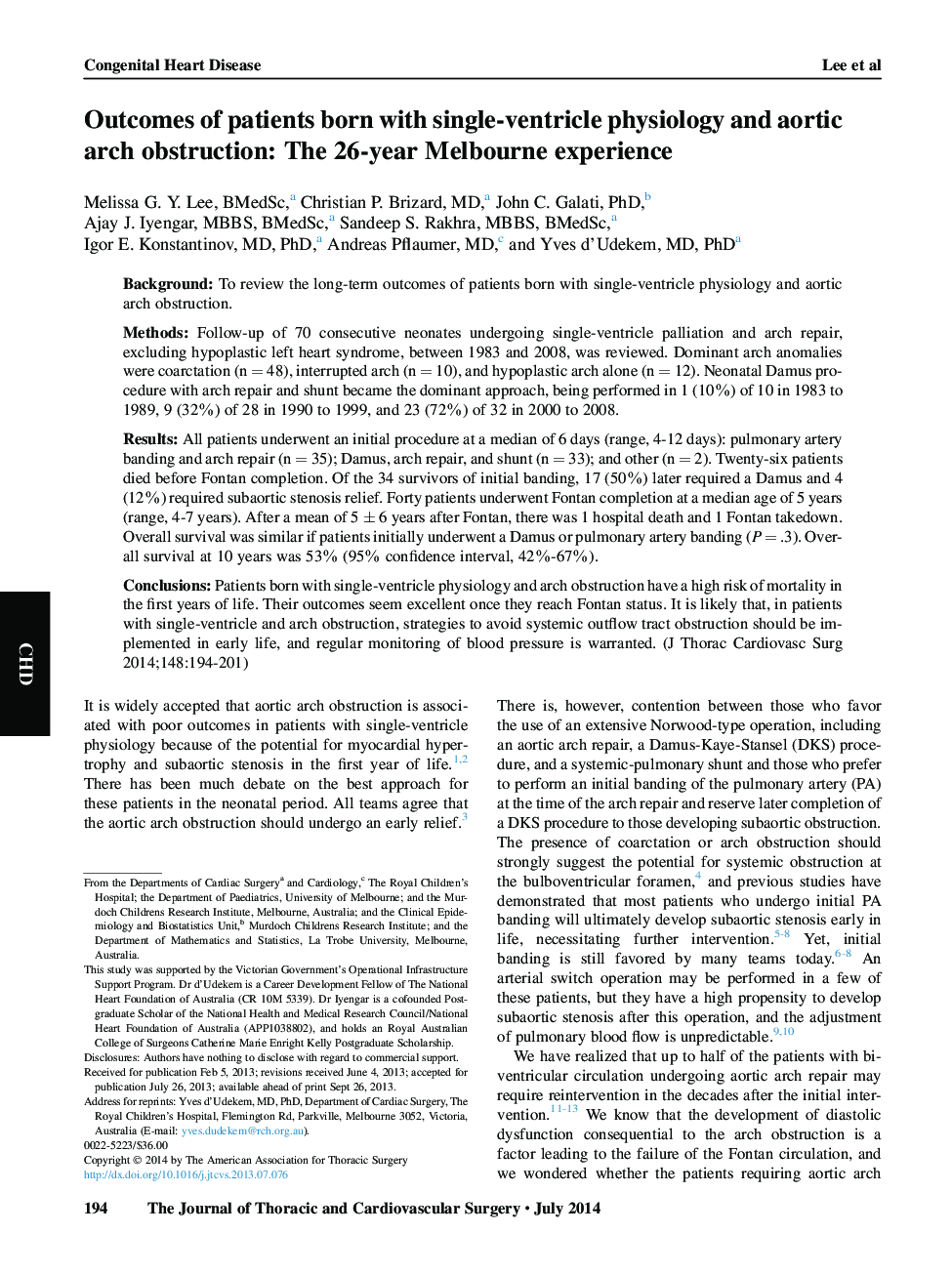| Article ID | Journal | Published Year | Pages | File Type |
|---|---|---|---|---|
| 2980765 | The Journal of Thoracic and Cardiovascular Surgery | 2014 | 8 Pages |
BackgroundTo review the long-term outcomes of patients born with single-ventricle physiology and aortic arch obstruction.MethodsFollow-up of 70 consecutive neonates undergoing single-ventricle palliation and arch repair, excluding hypoplastic left heart syndrome, between 1983 and 2008, was reviewed. Dominant arch anomalies were coarctation (n = 48), interrupted arch (n = 10), and hypoplastic arch alone (n = 12). Neonatal Damus procedure with arch repair and shunt became the dominant approach, being performed in 1 (10%) of 10 in 1983 to 1989, 9 (32%) of 28 in 1990 to 1999, and 23 (72%) of 32 in 2000 to 2008.ResultsAll patients underwent an initial procedure at a median of 6 days (range, 4-12 days): pulmonary artery banding and arch repair (n = 35); Damus, arch repair, and shunt (n = 33); and other (n = 2). Twenty-six patients died before Fontan completion. Of the 34 survivors of initial banding, 17 (50%) later required a Damus and 4 (12%) required subaortic stenosis relief. Forty patients underwent Fontan completion at a median age of 5 years (range, 4-7 years). After a mean of 5 ± 6 years after Fontan, there was 1 hospital death and 1 Fontan takedown. Overall survival was similar if patients initially underwent a Damus or pulmonary artery banding (P = .3). Overall survival at 10 years was 53% (95% confidence interval, 42%-67%).ConclusionsPatients born with single-ventricle physiology and arch obstruction have a high risk of mortality in the first years of life. Their outcomes seem excellent once they reach Fontan status. It is likely that, in patients with single-ventricle and arch obstruction, strategies to avoid systemic outflow tract obstruction should be implemented in early life, and regular monitoring of blood pressure is warranted.
